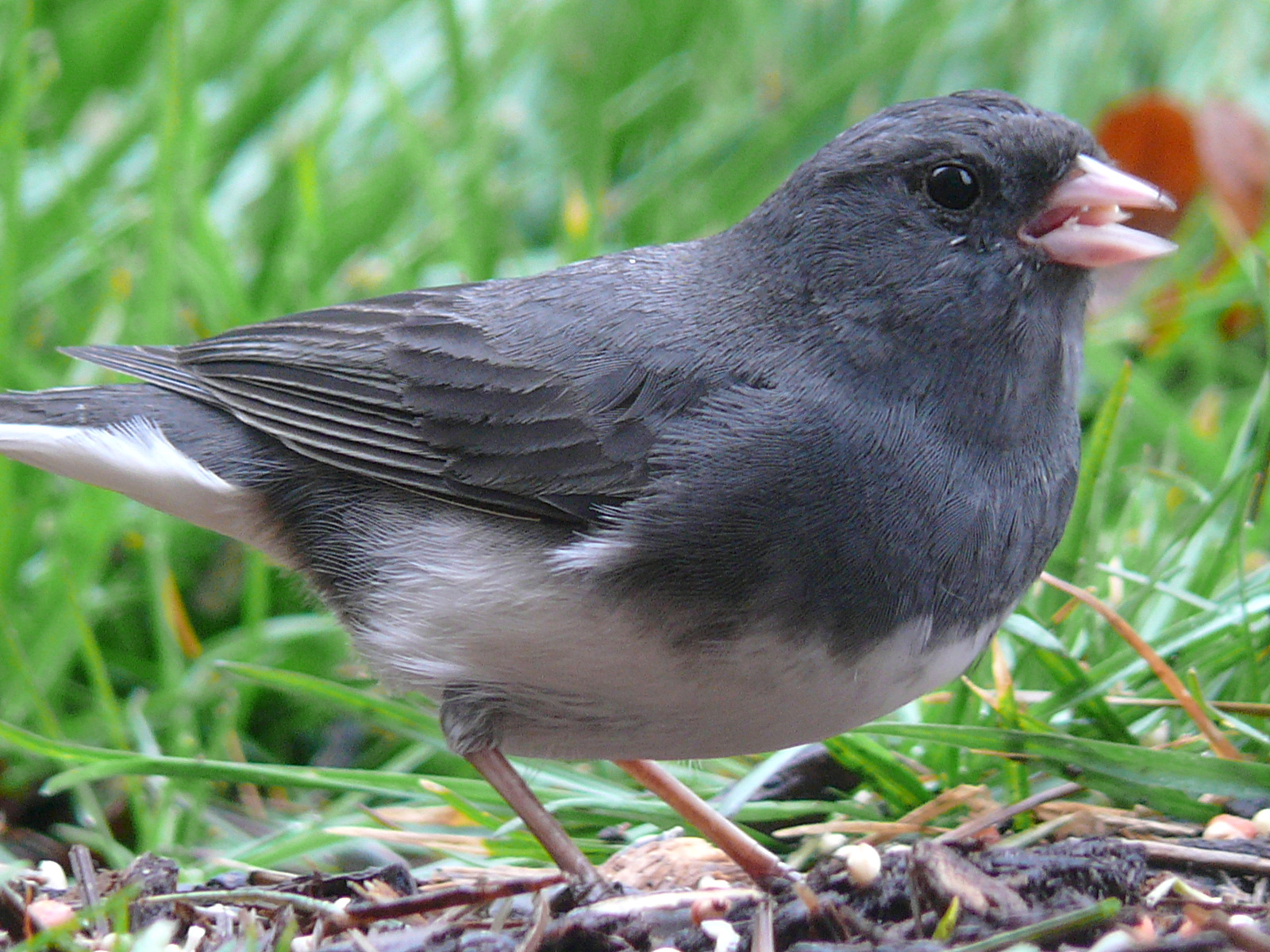She’s lying in my hand, still, but whole. A beautiful little creature, expired for no obvious reason. Her wings are folded; her feathers are exquisitely soft. Her half-ounce weighs nothing in my palm. Her little round, acorn-size head with its cone-shaped beak lies against my finger. Her legs are like little twigs, thin and bare. Her toes are curled; her tail feathers trail behind. Her bill is pink, and her head and back and wings are slate gray. Her tail is also gray, with white outer feathers. She’s the size of a sparrow, and her name is dark-eyed junco (Junco hyemalis). She’s been living in the woods, hunting seeds to crack with that cone-shaped bill, and occasionally finding insects to eat.
She probably came to Owl Acres in October, migrating south to escape the bitter winter cold of the spruce and fir forests of Canada. Who besides a junco would think of winter in Iowa as warm?
Juncos are one of the most common species of songbirds in North America, and they’re quite common in Iowa from October to April. They hop about on the ground, foraging for weed seeds like ragweed, chickweed, buckwheat, lamb’s quarter and sorrel. We watch them on their daily rounds at our bird feeder, foraging in the grass below the feeder, picking up seeds dropped by other birds.
Most of the juncos that stop in Iowa on their fall migration are older males or young females. The older females tend to fly farther south, even into Mexico to overwinter. Young males tend to stay closer to their Canadian breeding grounds to snag the best nesting sites come spring.
The juncos that overwinter in Iowa often flock together, sharing intel on good patches for foraging or where the best bird feeders are. Bird-banding studies show that flocks may stay together for several seasons. A flock of these hardy little birds is called a chittering, or a flutter of juncos. Within the flock, they maintain a hierarchical pecking order that favors the early arrivals and forces those lower on the ladder to wait to eat at a bird feeder until the boss birds have eaten.
This little slate-gray sparrow-sized bird with her pink bill and white belly and tail feathers gets her name from a Spanish word meaning one who lives near reeds. Perhaps that’s because she forages and nests on the ground. When she flies, she shows off those white outer tail feathers.
Dark-eyed juncos have a wide variety of songs and calls. Because they mate in Canada, we don’t often hear the male’s lovesongs. We do hear their alarm calls, which are a metallic clicking sound, and a ticking sound they make when flying up into a tree or bush. The full repertoire includes a bell-like trill or a fuzzy rattle; a series of “chew-chew-chew’s” interspersed with clicks and a cricket-like “zit;” Juncos also sing a lower-pitched, looser-sounding trill, or a chip, chip, chip of alarm.
When the juncos migrate back to Canada in April or so, they’ll set up housekeeping in open, cup-shaped nests that they build on or near the ground. They hide the nests under logs, rocks, exposed roots, or anything else that might provide shelter from predators. When it’s done, the female will lay and incubate three to five eggs. After the eggs hatch, the pair will work together to feed insects to the hatchlings until they can fly and leave the nest. the pair will raise a second brood before coming back south for the winter.
The little one in my hand is still. She won’t be migrating this spring. I will return her to her bed in the dry winter grass where she’ll lend her tiny bones to the earth.
Photo by Ken Thomas

2 comments
Juncos are one of my favorites to watch in the winter!